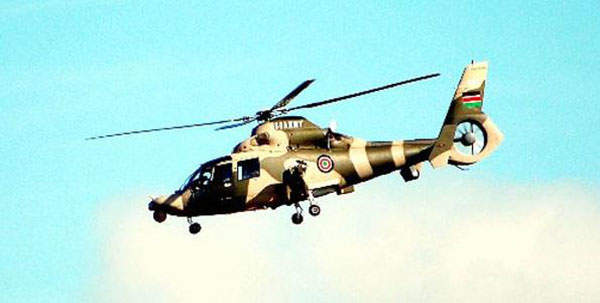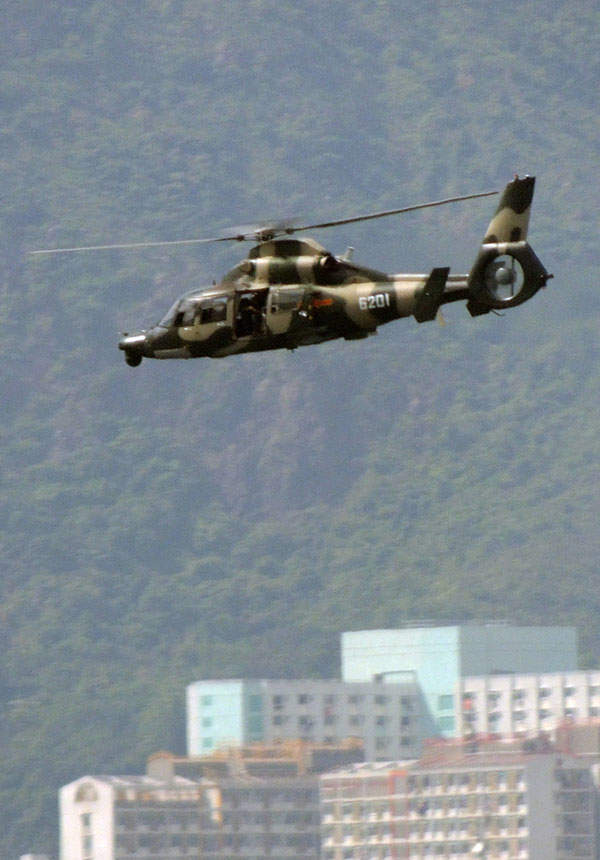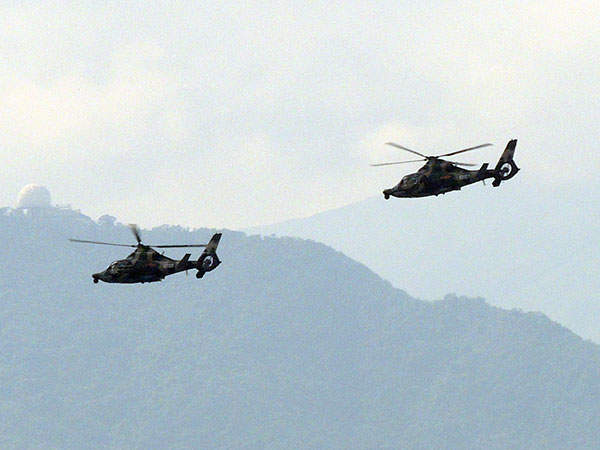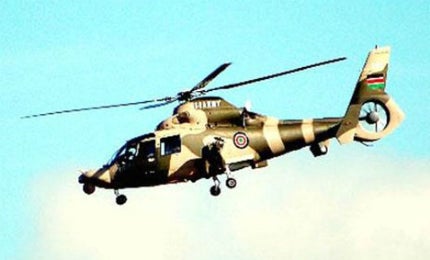Harbin Z-9W, or Zhi-9W, is an attack helicopter produced by the Harbin Aircraft Industry Group. The Z-9W is an indigenous attack variant of the Z-9 utility helicopter, which itself is a license-built version of the Eurocopter AS365 Dauphin.
The Z-9W can perform in a wide range of missions, including anti-tank, close air support, armed patrol, anti-terrorism and law enforcement.
The Z-9W performed its first flight in 1987. The first missile was test fired from the helicopter in 1989. The production variant was inducted into service by the People’s Liberation Army (PLA) in the early 1990s. The PLA is believed to have fielded 30 to 40 helicopters since. China delivered a number of Z-9W helicopters to undisclosed customers in 2010.
Helicopter variants
The Z-9WA is an improved night attack variant of the Z-9W. Unveiled in 2005, the variant is fitted with a nose mounted EO turret housing a low-light TV and forward looking infrared (FLIR) cameras. Other notable features include redesigned weapon pylons, a new cockpit, an electronic warfare suite and more powerful engines.
The Z-9WE is a light attack helicopter intended for export markets. Four helicopters were delivered to the Kenyan Armed Forces between 2010 and 2011.
The Z-9EC is an anti-submarine warfare variant developed for the Pakistan Naval Air Arm. The helicopter is equipped with ASW torpedoes and a mix of sensors and radars to find, track and destroy enemy submarines.
Harbin Z-9W design
The Z-9W helicopter is of light aluminium alloy construction using glass-fibre reinforced plastic (GFRP) and Nomex flame resistant fibre materials. The tear-drop shaped design incorporates a pointed boom to the tail and stepped-up cockpit. Two weapon pylons are externally attached to the fuselage aft the cockpit.
The helicopter has a length of 13.7m, rotor diameter of 12m and a height of 3.9m. The maximum take-off weight of the helicopter is 4,100kg. The Z-9W can carry a useful load of 1,366kg.
Cockpit and avionics of the attack helicopter
The Z-9W features a two-person glass cockpit which integrates multifunction displays (MFD), an autopilot system, a radio altimeter, INS/GPS, transponder and a single-sideband radio.
The helicopter can be optionally fitted with a KDF-806 automatic direction finder, KTR-908 VHF command radio set and a TB-31 intercom system.
The base variant of the Z-9W is equipped with an optical sight installed on the roof of the cockpit over the position of weapon operator. It is used to search and aim the targets, as well as to guide the anti-tank missile in a semi-automatic command line of sight mode.
The under-nose day / night targeting turret of Z-9WA was developed by Luoyang Electro-Optics Technology Development Centre (EOTDC). The unit integrates FLIR and a low-light TV system, allowing operations during day / night in all-weather conditions.
Missiles and countermeasures
The weapon pylons on either side of the fuselage can carry up to eight HJ-8 wire-guided anti-tank missiles. The Z-9W can also be armed with two 23mm cannons/12.7mm machine guns/57mm rocket launchers, or four TY-90 air-to-air missiles.
The electronic countermeasures suite of Z-9WA integrates a missile approach warning system and chaff/flare decoy dispensers. The system is capable of detecting infrared signature of incoming missiles. It warns the pilot and automatically activates the chaff/flare dispensers to deceive the missile.
Engines and performance of the Chinese helicopter
The Z-9W is powered by two WZ-8A turboshaft engines. The WZ-8A is a license-built version of Turbomeca Arriel-IC1 engine. Each engine develops a power output of 632kW.
The helicopter is equipped with hydraulically-operated retractable tricycle type landing gear. The two single-wheeled main landing gear units retract into the fuselage. The twin-wheeled nose unit also retracts rearward into the fuselage. Each unit is equipped with oleo-pneumatic shock absorbers.
The Z-9W helicopter can fly at a maximum cruise speed of 238km/h, while carrying external weapons. The ferry range with internal auxiliary tank is 1,000km. The helicopter has an endurance of 3.35 hours.
The Global Military Rotorcraft Market 2011-2021
This project forms part of our recent analysis and forecasts of the global military rotorcraft market available from our business information platform Strategic Defence Intelligence. For more information click here or contact us: EMEA: +44 20 7936 6783; Americas: +1 415 439 4914; Asia Pacific: +61 2 9947 9709 or via email.
Related content
Z-10 Attack Helicopter, China
The Z-10 attack helicopter was developed by the Changhe Aircraft Industries Group (CHAIG) and China Helicopter Research and Development Institute (CHRDI) for the People’s Liberation Army (PLA).
WZ-551 (Type 90/92) Wheeled Armoured Personnel Carriers, China
The WZ-551 is a family of wheeled armoured vehicles designed and built by the China North Industries Group Corporation (Norinco) for the People’s Liberation Army Ground Force (PLAGF).







